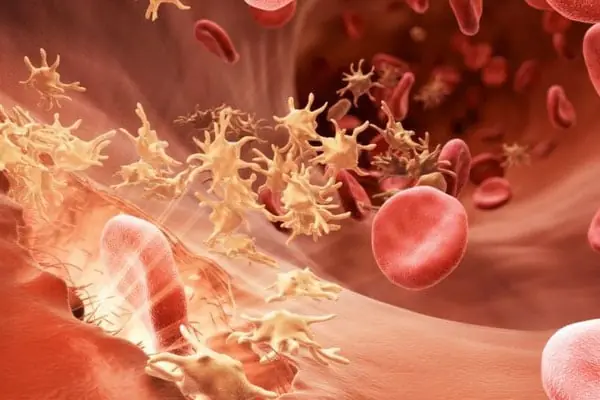
12 Warning Signs That May Signal a Brain Aneurysm — Don't Ignore Them
12 Warning Signs That May Signal a Brain Aneurysm — Don't Ignore Them

Identifying the warning signs of a brain aneurysm can be challenging, but medical professionals are working to raise awareness about the potential consequences of this life-threatening condition. Knowing the symptoms is crucial for prompt medical attention.
The Mayo Clinic describes a brain aneurysm as "a bulge or ballooning in a blood vessel in the brain. It often looks like a berry hanging on a stem." This bulge can either leak or rupture, leading to bleeding into the brain, a severe type of hemorrhagic stroke called a subarachnoid hemorrhage. Most often, a ruptured brain aneurysm occurs in the space between the brain and the thin tissues covering it.
Common Symptoms of a Leaking or Ruptured Brain Aneurysm
It's important to note that you may not experience all of these symptoms. However, if you experience a sudden, severe headache, especially if it's accompanied by other signs, seek immediate medical help.
The Mayo Clinic and the Brain Aneurysm Foundation list some of the most common symptoms to be aware of:
- A sudden and severe headache: Often described as "the worst headache of my life," this is frequently the first and most critical symptom of a leaked or ruptured aneurysm. It typically starts suddenly and may persist for days.
- Blurred or double vision: Visual disturbances can occur.
- Confusion: A sudden onset of disorientation.
- One dilated pupil: One pupil may appear larger than the other.
- One drooping eyelid: The eyelid on one side may droop involuntarily.
- Fainting: A loss of consciousness.
- Nausea/vomiting: Feeling sick to your stomach and throwing up.
- Pain around one eye: Localized pain in or around one eye.
- Stiffness in the neck: A sudden and unexplained stiffness in the neck.
- Sensitivity to light (photophobia): Discomfort or pain in the eyes due to light.
- Seizures: Uncontrolled electrical disturbances in the brain.
- Weakness and/or numbness: A sudden feeling of weakness or numbness in parts of the body.
If you experience most of these symptoms, especially the sudden severe headache, call an ambulance or have someone drive you to the hospital immediately. Avoid driving yourself.
When a brain aneurysm leaks, it's known as a sentinel bleed. The primary symptom is a severe headache that starts abruptly and doesn't subside. Seeking medical help right away at this stage is vital to potentially prevent a full rupture.

What Causes Brain Aneurysms?
While the exact cause of brain aneurysm formation is still unknown, doctors believe certain factors can increase the risk:
- Age and Gender: Older individuals and women are generally at higher risk.
- Lifestyle Factors: Heavy smoking, drug abuse, and excessive alcohol consumption are linked to an increased risk.
- High Blood Pressure: People with uncontrolled high blood pressure are also more susceptible to developing aneurysms over time.
- Trauma and Infection: Brain aneurysms can also occur after a head injury or certain blood infections.
- Congenital Factors: Some individuals are born with pre-existing conditions that make them prone to aneurysms.
Being aware of these risk factors and symptoms is crucial for early detection and potentially life-saving intervention. If you or someone you know experiences any of these warning signs, especially a sudden, severe headache, do not hesitate to seek immediate medical attention.
News in the same category


Scientists Finally Figure Out What’s Causing Girls to Get Periods at a Younger Age

Top Foods to Avoid After 60 for Better Health

Aspergillus Fungus Threatens Millions As It Spreads Due To Climate Change, Scientists Warn

What Are the Tiny Blisters on Your Hands in Summer Trying to Tell You?

5 Pains in the Body That May Signal Early-Stage Cancer: Don’t Delay, or It May Spread

9 Early Warning Signs of Stomach Cancer: See a Doctor Immediately If You Have Even One

Dark Under-Eye Circles: A Subtle Health Warning You Shouldn't Ignore

Simulation Reveals Harsh Effects of Ozempic Beyond Weight Loss

4 Types of People Who Should Limit or Avoid Eating Cabbage

The Little Bow: Unraveling the Mystery on the Front of Women's Underwear

Your Poop and Colon Cancer: Decoding Early Warning Signs

Why Mosquitos But Some People More Than Others

Surprising Causes Of Hives Revealed — What May Be Triggering Your Skin Reaction

Stage 4 cancer patient warns overlooked minor signs can mask a fatal disease

Parents’ Common Feeding Habit Leads to Stomach Cancer in 2-Year-Old Boy

36-Year-Old Teacher Passes Away from Diabetes Despite Not Liking Sweets — Doctor Says It's Due to 4 Favorite Foods

American Doctor Identifies 5 Warning Signs Your Liver Is Overloaded – Seek Medical Attention Even If You Have Just One

Experts Warn Against Cervical Adjustments After Rare Paralysis Case In Neck Clinic
News Post

Experts Say Turning Off Wifi And Keeping Phones Out Of The Bedroom Could Boost Your Health

If You See A Woman Wearing A Wedding Ring On Her Pinky Finger Here’s What It Means

Experts Are Shedding Light on the ‘Death Rattle’ Phenomenon Before Passing

Experts Break Down How Far You’d Need To Be To Survive A Nuclear Blast

Scientists Finally Figure Out What’s Causing Girls to Get Periods at a Younger Age

Experts Warn 1,000ft Mega Tsunami Could Slam Into Us Coast — Is Your Hometown In Danger?

Man Who Predicted Covid Outbreak Reveals Chilling Warning About New Emerging Crisis

Top Foods to Avoid After 60 for Better Health

Flight Attendant Reveals Why Cabin Says Hello As You Board, and It’s Not What Think

10 Cities That Could Be Underwater by 2050. Here’s The Full List

Aspergillus Fungus Threatens Millions As It Spreads Due To Climate Change, Scientists Warn

The Incredible Story of a British Airways Pilot Who Survived Being Ejected from a Plane for 20 Minutes

Never keep these 4 relics after losing a loved one

Euphorbia Hirta: Nature’s Hidden Gem for Wellness

Can Garlic Support Healthier Veins Naturally?

Can Chia Seeds Support a Healthier Waistline Naturally?

What Are the Tiny Blisters on Your Hands in Summer Trying to Tell You?

5 Pains in the Body That May Signal Early-Stage Cancer: Don’t Delay, or It May Spread

9 Early Warning Signs of Stomach Cancer: See a Doctor Immediately If You Have Even One
